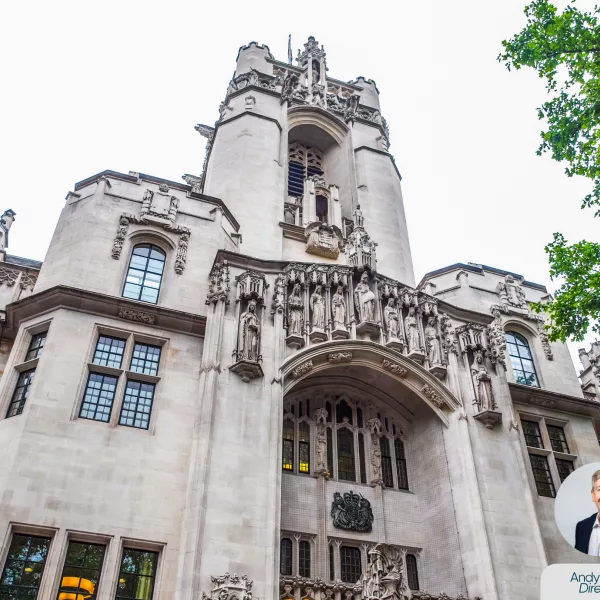
Government Publishes Updated PPG for the Green Belt
This week (27th February 2025) the Ministry of Housing, Communities and Local Government updated the Green Belt section of the National Planning Practice Guidance (‘the PPG’) in a move that sheds further light on the concept of the ‘grey belt’ and is likely to have a significant impact on how we assess projects in the Green Belt.
It is almost three months since the ‘grey belt’ concept was formally introduced in the revised National Planning Policy Framework (NPPF), resulting in much speculation and public discourse on how the apparent relaxation of Green Belt policy might be applied. We have seen a series of appeal decisions and some decisions at the local level which have provided commentary on the ‘grey belt’, with the new definition paving the way for the approval of data centres, housing developments, and battery storage installations.
It is worth reminding ourselves that the definition of ‘grey belt’ in the NPPF is as follows:
“For the purposes of plan-making and decision-making, ‘grey belt’ is defined as land in the Green Belt comprising previously developed land and/or any other land that, in either case, does not strongly contribute to any of purposes (a), (b), or (d) in paragraph 143. ‘Grey belt’ excludes land where the application of the policies relating to the areas or assets in footnote 7 (other than Green Belt) would provide a strong reason for refusing or restricting development.”
The definition effectively creates two categories of ‘grey belt’ – firstly, ‘previously developed land’ and secondly, ‘any other land’. The test in either case is whether the land strongly contributes to purposes (a), (b) and (d) of the Green Belt. In this regard, it is noteworthy that the ‘grey belt’ test only refers to three of the five purposes of the Green Belt. The five purposes are set out in Paragraph 143 of the NPPF:
a) to check the unrestricted sprawl of large built-up areas;
b) to prevent neighbouring towns merging into one another;
c) to assist in safeguarding the countryside from encroachment;
d) to preserve the setting and special character of historic towns; and
e) to assist in urban regeneration, by encouraging the recycling of derelict and other urban land.
One of the concerns with the new policy was the question of whether a site that strongly contributes to the purposes of the Green Belt might remain open to subjective analysis, particularly in the case of purposes (a) and (b). The lack of planning guidance up to this point required a judgement from the decision-maker on what constitutes ‘unrestricted sprawl’ or ‘neighbouring towns merging’. These macro level concepts were then applied to individual sites or distinctive land parcels, thereby meaning that preconceived notions on the purposes of the Green Belt resulted in a lack of granular analysis.
The updated PPG provides greater clarity on how to assess the contribution of Green Belt land to the relevant purposes, with the guidance explaining that there are three categories of contribution:
- Strong;
- Moderate;
- Weak or None.
The PPG provides examples of how certain sites may be determined to fall within one of the aforementioned categories. A site that makes a ‘moderate’ contribution or a ‘weak’ contribution can, therefore, be defined as ‘grey belt’. Furthermore, the guidance draws a clear distinction between towns and villages, as follows:
With respect to purpose (a) – ‘to check the unrestricted sprawl of large built-up areas’, it states that ‘villages should not be considered large built-up areas’.
Similarly, the PPG refers to purpose (b) – ‘to prevent neighbouring towns merging into one another’ and states that ‘this purpose relates to the merging of towns, not villages’.
With reference to purpose (d) – ‘to preserve the setting and special character of historic towns’, it states that that ‘this purpose relates to historic towns, not villages’.
The fact that the PPG clearly removes the role of villages as a determining factor in assessing the aforementioned purposes of the Green Belt removes much of the ambiguity that existed up to this point. Many local planning authorities rely on Green Belt Assessments that were prepared on the presumption that villages, hamlets and other smaller settlements should be treated in the same way as towns when assessing the purposes of the Green Belt.
The clarifications provided in the updated PPG appear to reinforce the strength of the ‘grey belt’ policy and the substantive changes it is likely to have on land use planning. There remains a need to undertake a sequenced and structured assessment of sites that are considered to be ‘grey belt’ in accordance with the criteria outlined in Paragraph 155 of the NPPF, thereby ensuring that the process is likely to be nuanced.
One of the potential consequences of the PPG and the apparent strengthening of the ‘grey belt’ concept is that local planning authorities may look more closely at footnote 7 of the NPPF and whether there is a ‘strong reason’ to refuse a development proposal on a ‘grey belt’ site because it conflicts with national policies, such as habitats sites, National Landscapes, or areas at risk of flooding.
Notwithstanding such considerations, the introduction of the ‘grey belt’ concept and the associated clarity provided in the updated PPG appears to be a seminal moment in Green Belt policy and one that is likely to gain traction during the lifetime of the current Government.
Other news
See all

Heritage Planning: Insights from Historic England’s Latest Updates
Heritage planning is constantly changing, with legal precedent, new policies, updated advice, and a growing emphasis on balancing historic character…...
Read now
Court Ruling Mandates Early Publication of Planning Obligations
Recent High Court judgements have found that legal agreements made under the Town and Country Planning Act 1990 (which accompany a planning…...
Read now